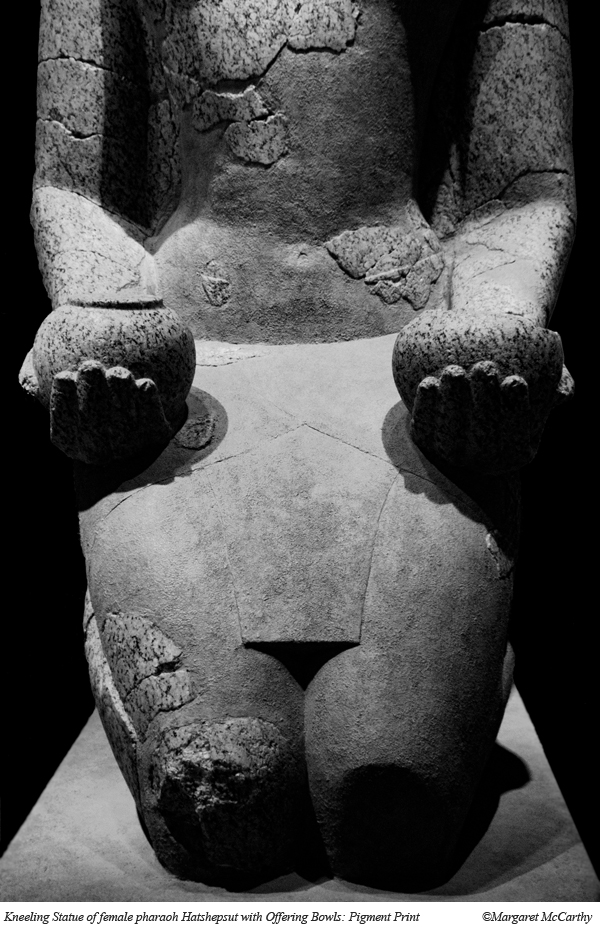

Dear
Friends,
On this Autumnal
Equinox, I bring you the story of Hatshepsut (Hat Shep
Soot), believed to be the second of Egypt's female pharaohs.
She was one of the
most prolific builders in Ancient Egypt, commissioning hundreds of construction
projects throughout both Upper and Lower Egypt. Yes, she believed in
infrastructure.
Her monuments were carved with proclamations by the god Amun:
"Welcome my sweet daughter, my favorite, the King of Upper and Lower Egypt, Maatkare, Hatshepsut. Thou art the Pharaoh, taking
possession of the Two Lands."
Hatshepsut is sometimes depicted with the traditional regalia of kilt, crowning
head-cloth and false beard. In Egyptian artistic convention, causing herself to
be depicted as a traditional male king, Hatshepsut ensured that this is what
she would become.
Following her death, her step-son Thutmose III ruled
Egypt alone for 33 years. At the end of his reign, attempts were made to
remove all traces of Hatshepsut's rule. Her statues were torn down, her
monuments defaced, and her name removed from the official king list. Early
scholars disagree on his motives – vengeance? Or was he was simply
ensuring that his succession would run through the male line without female
interruption?
She was nearly lost to history.
In this photograph, she holds offerings to the Goddess Maat, affirming that
truth, justice and the balance they create are the
guiding principles of her reign. I've written four haiku, each prompted
by the image.


Hot Egyptian suns
these unkind Museum lights
a kind of justice --
Running through me, cracks,
space between what is and was …
still I kneel to Maat.
Balanced -- truth, justice:
treacherous step-son vanished.
Offering bowls full
The Beautiful Feast
leads always to me, parades
to my temple door.
©photograph & text copyright Margaret McCarthy 2021